- Home
- Stihl Chainsaws
- Stihl Chainsaw Sharpener
Stihl Chainsaw Sharpener
This post may contain affiliate links so I earn a commission.
Why should you consider purchasing the 2-in-1 Stihl chainsaw sharpener?
Chainsaws, among many other tools, need to be sharp.
It might sound obvious, but running your saw with a dull chain not only stresses the engine on the saw but also creates fatigue in the user, leading to an uncomfortable work experience and an increased likelihood of an accident occurring.
So, it only makes sense to use a sharp chain.
Check out the following review to see if this is one of the best handheld chainsaw sharpeners on the market today, and if it's the perfect tool for you!
Why Does A Chainsaw Need To Have A Sharp Chain?
This is a very good question with very obvious answers.
Running a chainsaw with a dull cutting chain will reduce the life of the engine on your saw.
The motor has to run much harder to cut wood, especially hardwoods, if the chain is not properly sharpened and then kept sharp for each use.
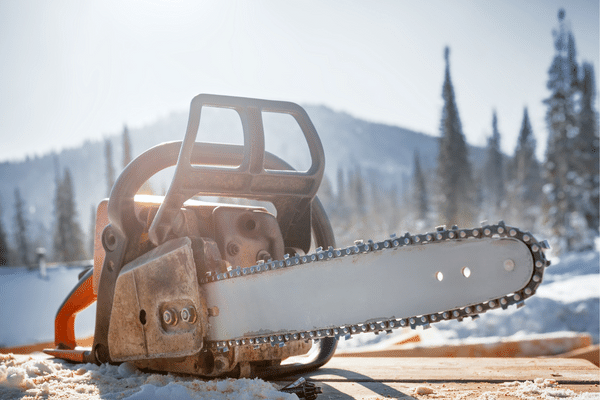
Often, if an inexperienced user runs a chain that's too dull for too long, the chain can actually become hardened and becomes difficult to sharpen later on.
The chain will be visibly burnt on the cutting edge.
This example is extreme, but it does happen when sharpening doesn't occur on a frequent basis.
User fatigue is a solid reason for keeping the cutting chain as sharp as possible.
As with any cutting tool, running a dull chain will require so much more energy than running a properly sharpened chain.
Unnecessary exertion can often lead to increased fatigue, which increases the chances of an accident with your chainsaw.
How Do I Know What Size Sharpener I Need For My Chainsaw?
When you buy a chainsaw sharpener, its size will be in direct relation to the size of the chain on your saw.
For those who are new, cutting chains come with various size cutting teeth.
Your saw should be equipped with a 5/32, 3/16 or a 7/32 cutter, which requires the same size file.
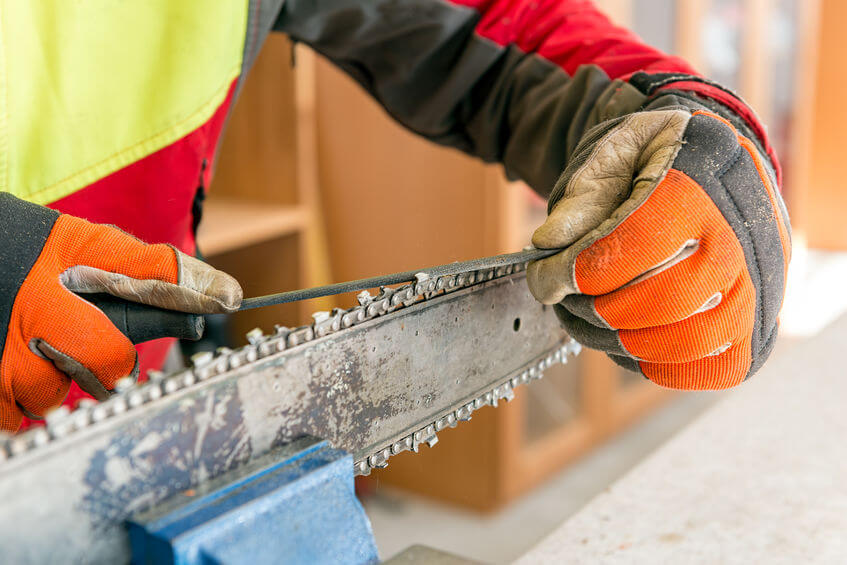
If you are uncertain about what size cutting chain your saw is equipped with, refer to the owner's manual.
The size file, which will come
with the sharpener, is a strict requirement.
File diameters that are too small or too large will give an improper angle on the cutter, which results in improper cutting.
The cutter will be either undercut or overcut at the very top of the tooth.
Improper file dimension can also create a thin cutting edge, which leads to premature failure due to broken teeth and increased wear.
How Many Times Can You Sharpen A Stihl Chainsaw?
There are recommendations showing that you may sharpen a cutting chain only 10 times, yet the number of times you can sharpen is going to be determined by many factors - that's not necessarily a hard and fast rule.
The amount of metal removed during sharpening is going to be a top factor in the number of sharpenings you may get out of a chain before it needs replacement.
Removing only the amount needed to create a sharp cutting edge is something that will come with experience.
It can take some time to learn this skill.
And contrary to popular belief, oversharpening a chain will not make it cut any faster.
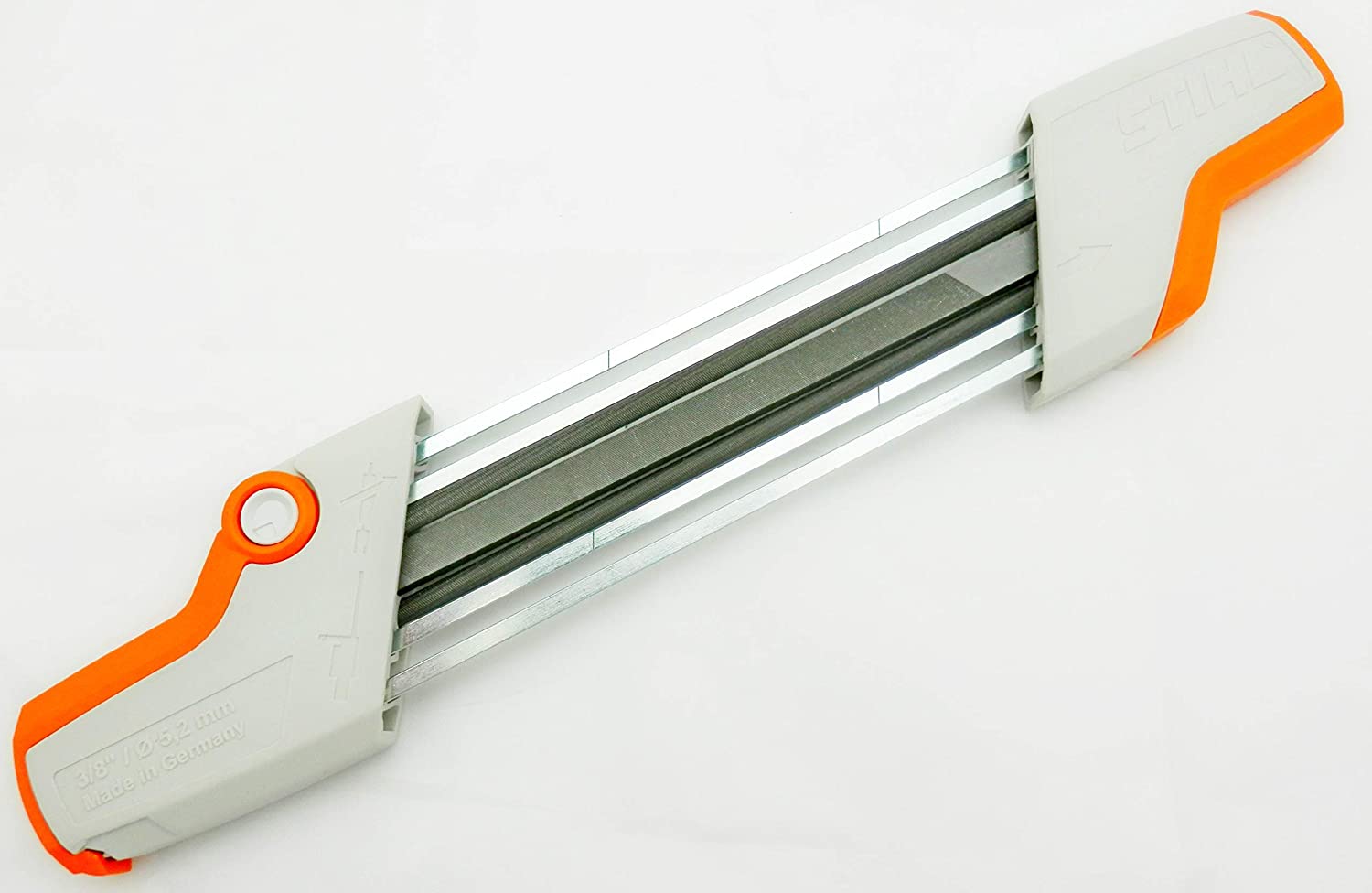
Using a sharpening guide will also determine how many
sharpenings, as it gives you some consistency.
With proper use, the guide will make every tooth identical giving the chain a much longer life.
All too often, when sharpening free hand without a guide, there is a tendency to either overcut or undercut the tooth.
Unevenness and inconsistency in tooth size will shorten the life of the chain, sometimes drastically.
One more factor that will influence how often you can sharpen your saw is this.....what are you sawing?
Cutting hardwood as opposed to softwoods will dull the chain quicker, resulting in more frequent sharpenings and thereby reducing chain life.
The most important factor in how often you must sharpen is going to be dirt.
Is your wood dirty?
Cutting wood that is dirty is going to result in sharpening more often and the extreme case in this scenario is going to be frozen dirt or mud.
In this case, the chain is literally trying to cut rock, dulling it almost immediately.
Stihl Chainsaw Sharpener Review
Now that you know a little bit more about what goes into sharpening a chainsaw chain, let's learn more about the Stihl chainsaw sharpener in particular.
I tried this product and have to say, I was impressed - though there are some important things to take into consideration.
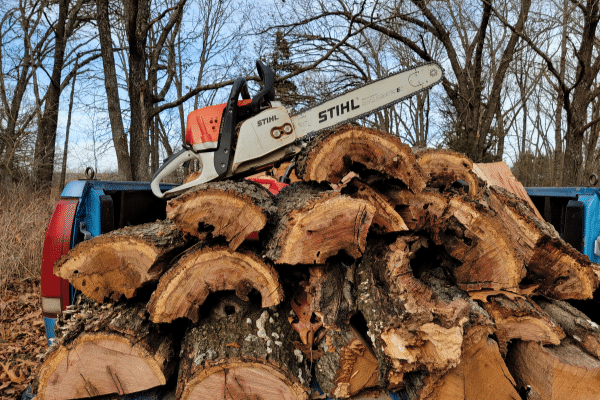
What Is The Stihl Chainsaw Sharpener?
Should you purchase a 2-in-1 file guide, you will also be incorporating a flat file so that the guide tooth or raker, as they are sometimes called, will be filed at the same time as cutting tooth.
This is highly recommended, as keeping the guides and rakers at the proper height will guarantee optimum cutting efficiency.
Where To Buy It
Stihl’s 2-in-1 chainsaw file guide can be purchased from many major retailers, such as Ace Hardware, Lowes and Home Depot.
If you are in a location where a Stihl dealership is present, they will also have sharpening guides and the necessary files properly sized for your particular chainsaw.
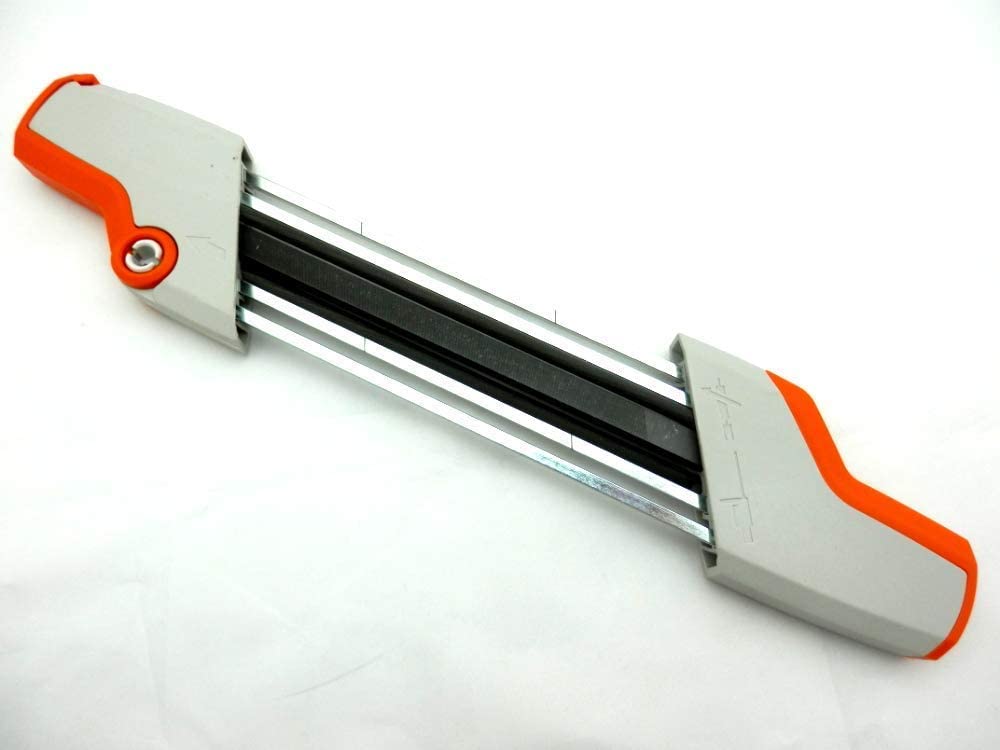
Stihl 2 in 1 Chainsaw Sharpener
Online retailers are a great source for Stihl sharpening guides, too, especially Amazon and Ebay.
When I started shopping around, I found that the pricing seems to be very consistent for Stihl’s 2-in-1 filing guide.
Prices range from $34.99 to $59.08.
Features And Specifications
Stihl's model number 5605-750-4304 guides are lightweight tools, weighing only 12.3 ounces.
The tool is 8.43 inches long, 1.96 inches wide, and .91 inches thick.
Round and flat files can also be purchased separately.
The guide has imprinted angles on the top surface to ensure you stay at the proper angle when filing.
What I Liked About The Stihl Chainsaw Sharpener
The advantages of owning a Stihl filing guide are many, including getting a very precise sharpened cutter tooth and a raker at the recommended height all in one tool.
Because this tool is lightweight and small, I found that it easily fits into any tool bag or box I chose to carry it in.
I have to say that running a chainsaw with a properly filed saw is a much easier and enjoyable experience as opposed to “riding” a dull chainsaw.
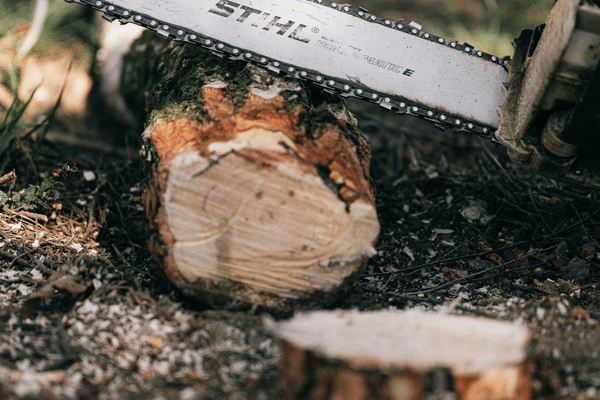
Having to lean on a saw with all you have will make your day long and
tiring.
This chainsaw sharpener really helped take a lot of fatigue out of caring for my saw and made maintenance far less tedious.
What I Didn't Like
Honestly, it is hard to find any real problem with Stihl chainsaw sharpening guides.
After talking with some other people, I found that some of the “ole-timers” may feel they can get a better cut by filing freehand.
Having filed by hand for many years, they are often reluctant to change.
I've done both and I prefer using guides like the Stihl 2-in-1.
The only other downside of using this product is simply that it's just another item you have to remember.
From your fuel can to your oil jug, there's a lot that goes into running a chainsaw - if you're headed deep into the woods to work, you may find it to be a bit of an inconvenience to bring this tool along - but trust me when I say it really is worth it.
Stihl Chainsaw Sharpener - Overall
Having a guide like this is a very beneficial tool for the novice and pro alike.
Consistency in the sharpening of a cutting chain will save money and wear and tear on your saw engine - and also wear and tear on your body.
Run your saw just once after using a sharpening guide and you will be sold on its value.

About the Author
Obsessed with firewood, Nick is behind over 350+ of Firewood For Life's articles, as well as countless reviews, guides and YouTube videos to help readers like you reduce heating costs and create the perfect fire.


